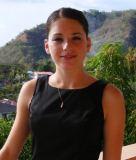Medical Student Perspective: Developing Critical Thinking Skills for the Wards
I recently read several articles suggesting that interns order a significantly higher number of tests before reaching a diagnosis than experienced attending physicians. Many have written articles on this subject and attribute this to inexperience and lack of exposure, and ultimately suggest that this issue will resolve itself as interns gain experience. This made me think: When will I become capable of reaching a diagnosis without using an excessive number of diagnostic exams? When are students or residents expected to learn how to streamline? Will there be an enlightened moment when we realize we have developed enough clinical confidence to confirm a diagnosis while being efficient with hospital funding? There are so many questions for which I do not have answers.
During my recent internal medicine core clerkship, I found one teaching activity to be especially helpful in this matter. One of the many educational activities we were scheduled to participate in was biweekly teaching rounds with Dr. L, a knowledgeable attending physician. He was a practicing internist in several area hospitals, including our teaching facility. As a result, Dr. L had not necessarily seen the patients we would present to him during these teaching rounds. Having to present a patient to a "consulting" physician meant that as a student, we had to gather all pertinent patient information under the assumption that he would be unfamiliar with minute details. This was a stark contrast to our usual rounds, which were presented to the physician caring for our patients who were thoroughly familiar with their history. This exercise taught us what information was essential to present and in what order the facts should be presented.
As each student presented their patient, the attending internist interjected to teach us how to think critically along the way. After Dr. L heard our brief patient introduction, he gave us time to reflect on differential diagnoses and guided in systematic thinking. What should our next step be? What is essential to test versus what is superfluous? Using his extensive experience, he taught us to focus on history and physical findings before transitioning to costly testing. This was the first time in medical school when I truly understood the importance of physical findings in guiding my decisions about a patient. In our first year of medical school, a problem-based learning group had attempted to teach us this very same thing; however, it was not until I had a live patient in front of me that I was truly able to comprehend the idea.
As we continued presenting our patient, the astute physician taught us several pathognomonic findings for diseases. He also taught us a basic approach to order studies in the most cost-effective and least-invasive way, all while gaining the maximum amount of information. As the weeks wore on, it was obvious that all the students were beginning to discuss patients like a group of young physicians. We became eager to have the most precise, concise presentation to guide our fellow medical students to reach our target diagnosis. With Dr. L's guidance, we developed the ability to present a patient to any physician in a logical manner, which would allow them to have the same clinical suspicion we did and help them reach a similar diagnosis.
My experience in my internal medicine core clerkship has been a sort of breakthrough in my medical education. Being guided by several attending physicians has finally led me to begin to feel as though I have the potential of using all of my theoretical knowledge, so I can apply it to a live patient. These teaching rounds became an exercise in refining my ability to practice medicine in the manner of an experienced physician. With further education, I hope to emulate such model behaviors as I continue on my path toward truly learning medicine.
|
Natasha Desjardins, MS-IV |
 |

